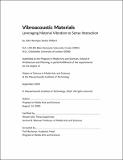| dc.contributor.advisor | Hiroshi Ishii. | en_US |
| dc.contributor.author | Wilbert, João Henrique Santos. | en_US |
| dc.contributor.other | Program in Media Arts and Sciences (Massachusetts Institute of Technology) | en_US |
| dc.date.accessioned | 2021-01-06T18:33:36Z | |
| dc.date.available | 2021-01-06T18:33:36Z | |
| dc.date.copyright | 2020 | en_US |
| dc.date.issued | 2020 | en_US |
| dc.identifier.uri | https://hdl.handle.net/1721.1/129190 | |
| dc.description | Thesis: S.M., Massachusetts Institute of Technology, School of Architecture and Planning, Program in Media Arts and Sciences, September, 2020 | en_US |
| dc.description | Cataloged from student-submitted PDF version of thesis. | en_US |
| dc.description | Includes bibliographical references (pages 151-168). | en_US |
| dc.description.abstract | Materiality has been a theme of extensive discussion in the field of human-computer- interaction (HCI) in recent years. This perspective has presented new opportunities to reimagine how computing technology can manifest itself in the physical world through materials and objects we use every day. The development of materials with embedded sensing is a crucial requirement for the fulfillment of the ubicomp vision. This thesis proposes to leverage material properties as an inherent capability of a material to afford interactivity. It focuses on how mechanical vibration, a property response that is natural and common to any material, can be leveraged to sense interactions. It presents PaperAware, an example of a vibroacoustic sheet material that can support touch, swipe, and non-contact interactions like blowing on the paper's surface. The thesis concludes by proposing a vision and series of techniques to develop materials with inherent vibroacoustic sensing capability. | en_US |
| dc.description.statementofresponsibility | by João Henrique Santos Wilbert. | en_US |
| dc.format.extent | 168 pages | en_US |
| dc.language.iso | eng | en_US |
| dc.publisher | Massachusetts Institute of Technology | en_US |
| dc.rights | MIT theses may be protected by copyright. Please reuse MIT thesis content according to the MIT Libraries Permissions Policy, which is available through the URL provided. | en_US |
| dc.rights.uri | http://dspace.mit.edu/handle/1721.1/7582 | en_US |
| dc.subject | Program in Media Arts and Sciences | en_US |
| dc.title | Vibroacoustic materials : leveraging material vibration to sense interaction | en_US |
| dc.type | Thesis | en_US |
| dc.description.degree | S.M. | en_US |
| dc.contributor.department | Program in Media Arts and Sciences (Massachusetts Institute of Technology) | en_US |
| dc.identifier.oclc | 1227278545 | en_US |
| dc.description.collection | S.M. Massachusetts Institute of Technology, School of Architecture and Planning, Program in Media Arts and Sciences | en_US |
| dspace.imported | 2021-01-06T18:33:35Z | en_US |
| mit.thesis.degree | Master | en_US |
| mit.thesis.department | Media | en_US |
